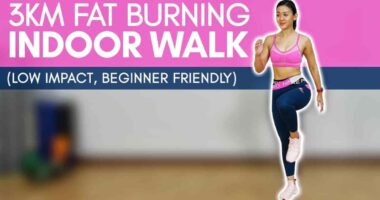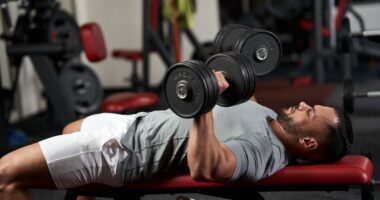Welcome to our blog post on the kettlebell Romanian deadlift (RDL). If you’re looking to strengthen your posterior chain, improve hip hinge mechanics, and enhance overall stability, you’re in the right place. In this article, we will guide you through the proper technique for performing the RDL with a kettlebell, highlighting its benefits and comparing it to the standard deadlift. Whether you’re a beginner or an experienced lifter, mastering the RDL can take your fitness journey to new heights. So, let’s dive in and learn how to perfect your kettlebell Romanian deadlift form.
How to Perfect Your Kettlebell Romanian Deadlift Technique?
The kettlebell Romanian deadlift (RDL) is a highly effective exercise that targets the posterior chain, including the glutes, hamstrings, and lower back. It not only builds strength but also improves hip hinge mechanics and enhances overall stability. To maximize the benefits of this exercise and perform it correctly, follow these key steps:
Set Up: Start by standing with your feet shoulder-width apart and the kettlebell placed a few inches in front of you. Engage your core while maintaining a slight bend in your knees.
Grip and Lift: Hinge at the hips, reach down, and grab the kettlebell handle with an overhand grip. Keep your back straight and shoulders pulled back. Initiate the movement by driving through your heels and straightening your legs, lifting the kettlebell with control.
Maintain the Hinge: As you lift the kettlebell, focus on maintaining a neutral spine and keeping your hips hinged. Do not round your back or let your shoulders slump forward.
Lower with Control: Slowly lower the kettlebell back down, hinging at the hips, while maintaining tension in your hamstrings and glutes. Keep your core engaged throughout the movement.
Repeat and Breathe: Perform the desired number of repetitions, remembering to exhale as you lift the kettlebell and inhale as you lower it.
By following these steps, you’ll be able to perform the kettlebell Romanian deadlift with proper form, reducing the risk of injury and maximizing the benefits of this fantastic exercise for your posterior chain. Remember to start with a lighter weight and gradually increase it as you become more comfortable and confident in your technique.
Muscles Worked During Romanian Deadlift Kettlebell
The kettlebell Romanian deadlift (RDL) is a compound exercise that primarily targets the posterior chain muscles, while also engaging several other muscle groups. Here’s a breakdown of the key muscles worked during this exercise:
Hamstrings
The RDL places a significant emphasis on the hamstrings, which are responsible for extending the hips and flexing the knees. As you hinge at the hips and lower the kettlebell, your hamstrings engage to control the descent and initiate the upward movement.
Glutes
Kettlebells and glutes go hand in hand. They are the largest muscle in the buttocks and are heavily activated during the RDL. It works in conjunction with the hamstrings to extend the hips and maintain stability throughout the exercise.
Erector Spinae
The erector spinal muscles, located along the spine, play a crucial role in maintaining an upright posture during the RDL. They provide stability and support to the lower back as you hinge forward and lift the kettlebell.
Core Muscles
The RDL also engages the core muscles, including the abdominals and obliques, to stabilize the spine and maintain proper alignment throughout the movement.
In addition to these primary muscle groups, the RDL also involves secondary muscles such as the quadriceps, calves, and upper back muscles to a lesser extent. By targeting multiple muscle groups, the kettlebell Romanian deadlift is an excellent exercise for developing strength, stability, and overall lower body power.
Benefits of Kettlebell Romanian Deadlifts
Incorporating kettlebell Romanian deadlifts (RDLs) into your workout routine offers a wide range of benefits for your strength, stability, and overall fitness. Here are some key advantages of performing this exercise:
Stronger Posterior Chain
One of the main goals of the RDL is to strengthen the posterior chain muscles, including the glutes, hamstrings, and lower back. Regularly performing RDLs can help strengthen and develop these muscles, leading to improved athletic performance, better posture, and reduced risk of lower back pain.
Enhanced Hip Hinge Mechanics
The RDL reinforces proper hip hinge mechanics, which is crucial for movements like deadlifts, squats, and kettlebell swings. Mastering the hip hinge pattern through RDLs improves your overall technique and reduces the risk of injury during other exercises.
Increased Functional Strength
By engaging multiple muscle groups simultaneously, the RDL builds functional strength that translates into real-life movements. This can improve your performance in activities such as lifting objects, running, jumping, and even everyday tasks.
Core Stability and Balance
The RDL requires significant core activation to maintain a stable spine throughout the movement. This strengthens your core muscles, enhances balance, and improves overall body control.
Improved Grip Strength
Holding onto the kettlebell during the RDL challenges your grip strength, which has practical applications in various sports and daily activities that require a strong grip.
Versatile and Convenient
Kettlebell RDLs can be performed virtually anywhere with minimal equipment, making them a versatile and convenient exercise option for home workouts, travel, or gym sessions.
Incorporating kettlebell Romanian deadlifts into your fitness routine can lead to significant improvements in strength, stability, and overall functional fitness. Whether you’re an athlete, a fitness enthusiast, or someone looking to enhance their overall well-being, the RDL is a valuable addition to your training arsenal.
Read Also: How to do Dumbbell Stiff Leg Deadlift to Build Hamstrings, Glutes, Lower Back
Standard Deadlift vs. Romanian Deadlift: A Comparison
The standard deadlift and the Romanian deadlift (RDL) are two popular exercises that target different muscle groups and have distinct movement patterns. Here’s a comparison of these exercises:
Muscle Emphasis
The standard deadlift targets a wide range of muscles, including the glutes, hamstrings, quadriceps, lower back, upper back, and grip strength. It is a compound exercise that engages both the posterior chain and the anterior chain muscles. On the other hand, the RDL primarily focuses on the posterior chain, specifically the glutes and hamstrings, with less emphasis on the lower back and grip strength.
Range of Motion
In the standard deadlift, the starting position is with the barbell on the floor, and you lift it all the way to a standing position, fully extending the hips. This exercise involves a larger range of motion. In contrast, the RDL starts with the weight already in the hands, and the movement consists of hinging at the hips while maintaining a slight bend in the knees. The RDL focuses on the eccentric (lowering) phase and emphasizes the controlled descent.
Technique and Form
Both exercises require proper form and technique to maximize their benefits and minimize the risk of injury. However, the RDL places more emphasis on maintaining a neutral spine and a proper hip hinge, while the standard deadlift involves a more complex movement pattern that includes driving through the legs and engaging the back muscles.
Strength and Power Development
The standard deadlift is considered a more strength-focused exercise, allowing you to lift heavier weights and build overall strength. It is often used in powerlifting and strength training programs. The RDL, while still challenging, places more emphasis on eccentric loading, muscular control, and developing hip hinge mechanics.
Application and Goals
The standard deadlift is often used to improve overall strength and power, making it beneficial for athletes and individuals looking to increase their maximal strength. The RDL, with its focus on the posterior chain and hip hinge mechanics, is valuable for targeting the glutes and hamstrings, enhancing stability, and improving movement patterns. It is commonly used for building strength, preventing lower back pain, and improving athletic performance.
In summary, the standard deadlift and the Romanian deadlift are two distinct exercises with different muscle emphasis, range of motion, technique, and goals. Both exercises offer unique benefits and can be incorporated into a well-rounded strength and conditioning program based on individual needs and goals.
Conclusion
Incorporating the kettlebell Romanian deadlift into your workout routine can yield tremendous benefits for your strength, stability, and overall fitness. By focusing on the posterior chain and emphasizing proper hip hinge mechanics, this exercise targets key muscle groups while improving movement patterns. Whether you choose to perform the standard deadlift or the RDL, both exercises have their unique advantages and can be integrated into a well-rounded training program. Remember to prioritize proper form, start with lighter weights, and gradually increase the load as you become more comfortable. So, get ready to strengthen your glutes, hamstrings, and lower back, and enjoy the transformative effects of the kettlebell RDL. Elevate your training, enhance your performance, and embrace the power of this exceptional exercise.









